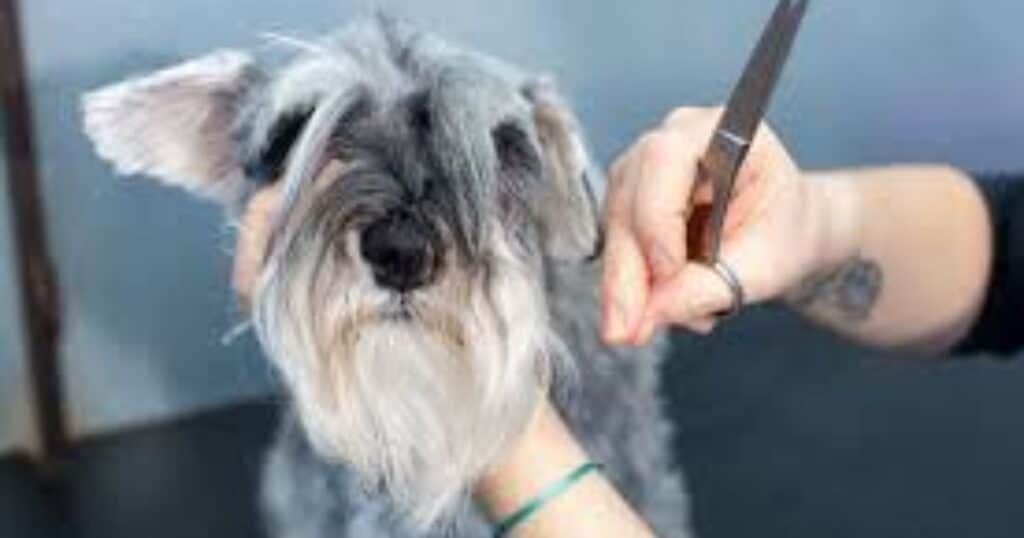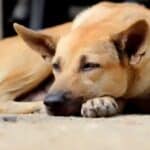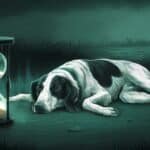Have you ever wondered why your neighbor’s dog sounds like it’s auditioning for a heavy metal band at 3 AM? Or why does your friend’s furry companion seem to think it’s the canine version of a drill sergeant? Well, you’re not alone. Schnauzers have quite the reputation in the dog world, and not always for the best reasons. But before we dive into the nitty-gritty of why some folks think Schnauzers are the worst dogs, let’s take a step back and look at these peppy pooches with fresh eyes.
Originating from Germany, Schnauzers were initially bred as ratters and guard dogs. These intelligent, spirited canines come in three sizes: miniature, standard, and giant. Each size brings its own unique set of challenges and charms. While some may label them as challenging pets, it’s essential to separate fact from fiction and understand the breed misconceptions that have given Schnauzers their bad rap.
In this comprehensive guide, we’ll explore the 25 reasons why people might think Schnauzers are the worst dogs. But don’t worry—we’ll also debunk myths, offer solutions, and show you why these feisty furballs might just be the perfect addition to your family. So, grab a cup of coffee (or a dog treat), and let’s dive into the world of Schnauzers!
Temperament Challenges: When Your Schnauzer Thinks It’s the Boss
Schnauzers are known for their strong personalities, which can sometimes lead to dog temperament problems. Let’s break down the top five temperament challenges that might make people think twice about bringing a Schnauzer home.
Aggressive Behavior
Schnauzers often get labeled as aggressive, but is this fair? While it’s true that these dogs can display canine aggression, it’s usually rooted in their protective instincts rather than genuine hostility.
For example, a Schnauzer might bark ferociously at the mailman, not because they’re inherently aggressive, but because they’re trying to protect their home and family. This behavior, while well-intentioned, can be misinterpreted as aggression.
To manage this behavior:
- Socialize your Schnauzer early and often
- Use positive reinforcement training techniques
- Expose them to various people, animals, and situations in a controlled manner
Remember, a well-socialized Schnauzer is typically a friendly and affectionate companion.
READ MORE POST: What Is A Skinwalker Dog? Myth Or Reality
Stubbornness
If Schnauzers were humans, they’d probably be that friend who always insists on picking the restaurant. Their stubborn streak is legendary, making them one of the more stubborn breeds out there.
Picture this: You’re trying to teach your Schnauzer to “stay,” but they’ve decided that “go” is a much better command. Frustrating? Absolutely. Impossible to overcome? Not at all.
Tips for training a strong-willed Schnauzer:
- Be consistent with your commands
- Use high-value treats as motivation
- Keep training sessions short and fun
- Practice patience. Rome wasn’t built in a day, and your Schnauzer won’t learn overnight
Territorial Instincts: Your Schnauzer’s Personal Empire
Schnauzers take their job as protectors very seriously. This can lead to dog possessiveness and territorial behavior, which might be challenging for some owners.
Your Schnauzer might decide that the entire block is their domain, barking at anyone who dares to walk by. While this can be annoying for neighbors, it’s important to understand that this behavior stems from their history as guard dogs.
To manage territorial behavior:
- Establish clear boundaries within your home
- Use positive reinforcement to reward calm behavior
- Teach a “quiet” command to control barking
- Provide plenty of mental and physical stimulation to prevent boredom-induced territorial behavior
Independence: When Your Schnauzer Needs “Me Time”
Unlike some breeds that stick to their owners like glue, Schnauzers have an independent streak. This canine introversion can sometimes be mistaken for aloofness or a lack of affection.
In reality, Schnauzers simply appreciate their personal space. They’re not clingy, which can be a plus for owners who don’t want a “velcro dog.” However, this independence can make training more challenging.
Ways to bond with your independent Schnauzer:
- Engage in interactive play sessions
- Use puzzle toys to stimulate their mind
- Participate in dog sports like agility or obedience trials
- Respect their need for space while also providing affection on their terms
Dominance Issues: Who’s Really in Charge Here?
Schnauzers have a tendency to test boundaries and may try to assert dominance over their human family members. This canine hostility can manifest in various ways, from refusing to follow commands to guarding resources.
Signs of dominance in Schnauzers:
- Pushing past you through doorways
- Refusing to move from furniture
- Growling when asked to do something
- Guarding food or toys
To establish yourself as the pack leader:
- Use consistent rules and boundaries
- Practice obedience training daily
- Control resources like food and toys
- Reward submissive behaviors
Remember, a dominant Schnauzer isn’t a bad dog; they just need clear leadership and guidance from their human companions.
Grooming Challenges: When Your Schnauzer Becomes a High-Maintenance Diva

If you thought your own hair care routine was demanding, wait until you meet a Schnauzer. These dapper dogs come with a set of grooming challenges that can make even the most patient owner pull their hair out (pun intended).
High Maintenance Coat
Schnauzers sport a double coat that’s wiry on top and soft underneath. This unique fur care requirement means regular brushing, trimming, and styling to keep them looking their best.
A typical Schnauzer grooming routine includes:
- Daily brushing to prevent matting
- Regular trimming (every 6-8 weeks)
- Hand stripping for show dogs (a specialized technique to maintain coat texture)
While their coat doesn’t shed much, it does require consistent attention to prevent it from becoming a tangled mess.
Regular Professional Grooming Needed
Unless you’re a professional groomer yourself, your Schnauzer will need regular visits to the doggy salon. These dog groomer visits can add up in terms of time and money.
Frequency of professional grooming:
- Every 6-8 weeks for a full groom
- Every 3-4 weeks for a touch-up
A typical professional grooming session for a Schnauzer includes:
- Bath and blow-dry
- Trimming of body, legs, and face
- Ear cleaning
- Nail trimming
- Styling of the signature Schnauzer “beard” and eyebrows
Beard Stains and Odors
Ah, the iconic Schnauzer beard. While it gives them their distinguished look, it also acts as a magnet for food, water, and whatever else your dog decides to stick their nose into. This can lead to stains and unpleasant odors if not properly maintained.
Daily beard care routine:
- Wipe the beard with a damp cloth after meals
- Use a dog-safe beard shampoo 2-3 times a week
- Trim the beard regularly to prevent it from becoming too long and unmanageable
Shedding Issues
While Schnauzers are often touted as hypoallergenic, this isn’t entirely accurate. They do shed less than many other breeds, but they’re not completely allergen-free.
Shedding comparison:
| Breed | Shedding Level |
| Schnauzer | Low |
| Labrador Retriever | High |
| Poodle | Very Low |
| German Shepherd | High |
To manage shedding and allergens:
- Brush your Schnauzer regularly to remove loose hair
- Use an air purifier in your home
- Vacuum frequently
- Consider allergy medication if you’re sensitive
Susceptibility to Skin Conditions
Schnauzers can be prone to various skin issues, which can add to their grooming needs. Common dog diseases affecting Schnauzer skin include:
- Allergies (environmental or food-related)
- Seborrhea (excessive production of sebum)
- Hot spots
Preventative measures for skin health:
- Feed a high-quality, balanced diet
- Use dog-specific shampoos and avoid over-bathing
- Regular vet check-ups to catch issues early
- Consider supplements like omega-3 fatty acids for coat health
Schnauzers’ Excessive Barking Tendencies

If Schnauzers had a motto, it might be “Why whisper when you can shout?” These vocal canines are known for their tendency to bark… a lot. Let’s explore why Schnauzers might earn the title of neighborhood noise-makers.
Alertness Turning Into Noise
Schnauzers were bred to be alert watchdogs, and boy, do they take their job seriously. Every squirrel, leaf, or passing car is a potential threat that must be announced at top volume.
Common triggers for Schnauzer barking:
- Strangers approaching the house
- Other dogs in the vicinity
- Unfamiliar noises
- Changes in their environment
While this alertness can be beneficial for home security, it can quickly become problematic if not managed properly.
Sensitivity to Sounds
Schnauzers have incredibly keen hearing, which contributes to their reputation as noisy dogs. They can pick up on sounds that humans can’t even hear, leading to what seems like unprovoked barking.
To create a calming environment:
- Use white noise machines to mask outside sounds
- Provide a “safe space” where your Schnauzer can retreat when overwhelmed
- Use calming aids like pheromone diffusers or anxiety wraps
- Gradually expose your dog to different sounds to desensitize them
Difficulty in Training to Reduce Barking
One of the most challenging dog training issues with Schnauzers is teaching them when it’s appropriate to bark and when to be quiet. Their strong-willed nature can make this particularly frustrating for owners.
Effective methods for bark control:
- Teach the “quiet” command using positive reinforcement
- Use distraction techniques when barking starts
- Never yell at your dog for barking, as this can be interpreted as joining in
- Consider professional training if the problem persists
Vocal Nature Can Be Disturbing
Schnauzers don’t just bark – they have a whole repertoire of vocalizations that can range from amusing to annoying. These neighborhood disturbances can strain relationships with neighbors and test your patience.
Types of Schnauzer vocalizations:
- Barking
- Howling
- Whining
- Grumbling
- “Talking” (a series of low woofs)
To channel this vocal energy positively:
- Teach “speak” and “quiet” commands
- Provide plenty of mental stimulation to prevent boredom-induced barking
- Consider agility or obedience training to give your dog a “job”
Challenging to Control in Noisy Environments
Taking your Schnauzer to a busy park or a crowded street can be an adventure in noise control. Their sensitivity to sounds and tendency to alert-bark can make these outings stressful for both dog and owner.
Strategies for managing your Schnauzer in public:
- Start with short exposures to busy environments and gradually increase the duration
- Use positive reinforcement to reward calm behavior
- Bring high-value treats to maintain focus on you
- Consider using a head halter for better control
Remember, with patience and consistent training, even the most vocal Schnauzer can learn to use their indoor voice.
Potential Health Concerns: When Your Schnauzer’s Health Goes Haywire

Like all breeds, Schnauzers come with their own set of potential health issues. Understanding these breed-specific illnesses can help you provide the best care for your furry friend.
Genetic Predisposition to Certain Diseases
Schnauzers are prone to certain genetic predispositions that can affect their health. Some of these include:
- Pancreatitis
- Diabetes
- Hypothyroidism
- Bladder stones
Regular check-ups and early detection are key to managing these conditions. Always choose a reputable breeder who conducts health screenings on their breeding dogs.
Prone to Obesity
Schnauzers love their food, and combined with their potential for laziness (especially as they age), this can lead to obesity. Excess weight can exacerbate other health issues and reduce quality of life.
Tips for maintaining a healthy weight:
- Measure food portions carefully
- Limit treats (no more than 10% of daily calorie intake)
- Provide regular exercise (at least 30-60 minutes daily)
- Consider a weight management dog food if needed
Dental Problems
Dental issues are common in Schnauzers and can lead to more serious health problems if left untreated. Regular dental care is crucial for preventing these issues.
At-home dental care tips:
- Brush your Schnauzer’s teeth daily, if possible
- Provide dental chews or toys
- Consider water additives designed for dental health
- Schedule regular professional dental cleanings with your vet
Eye Issues
Schnauzers can be prone to various eye conditions, including cataracts, progressive retinal atrophy, and entropion. Regular eye exams can help catch these issues early.
Signs of eye problems to watch for:
- Cloudiness in the eyes
- Excessive tearing
- Redness or inflammation
- Changes in pupil size or responsiveness
Susceptibility to Joint Conditions
As they age, Schnauzers may develop joint issues like hip dysplasia or patellar luxation. These conditions can significantly impact their mobility and quality of life.
To support joint health:
- Maintain a healthy weight
- Provide appropriate exercise (avoid high-impact activities for dogs with joint issues)
- Consider joint supplements like glucosamine and chondroitin
- Provide a comfortable sleeping area with good support
By being aware of these potential health concerns, you can take proactive steps to keep your Schnauzer healthy and happy for years to come.
Socialization Challenges: When Your Schnauzer Prefers to Be a Lone Wolf
Schnauzers can be a bit particular when it comes to social interactions. Their strong personalities and protective nature can lead to some dog social skills challenges. Let’s explore why Schnauzers might not always be the life of the party.
Initial Shyness or Aloofness
Many Schnauzers approach new situations with caution. This animal hesitancy can be mistaken for unfriendliness, but it’s usually just their way of assessing potential threats.
To help your Schnauzer overcome shyness:
- Start socialization early (ideally between 3-12 weeks of age)
- Expose them to a variety of people, animals, and environments
- Use positive reinforcement to create good associations with new experiences
- Never force interactions – let your Schnauzer approach new situations at their own pace
Suspicion Towards Strangers
Schnauzers have a natural canine distrust of unfamiliar people. While this makes them excellent watchdogs, it can be problematic in social situations.
Tips for managing suspicion:
- Teach a “friend” command to indicate when someone is welcome
- Practice controlled introductions with new people
- Reward calm, friendly behavior towards strangers
- Consider obedience classes to improve social skills in a controlled environment
Tendency to Be Overprotective
Schnauzers can develop strong bonds with their families, leading to overprotective behavior. These pet-guarding issues can manifest as growling, barking, or even nipping at perceived threats.
To curb overprotective tendencies:
- Establish clear boundaries and rules
- Socialize your Schnauzer extensively
- Teach a solid “leave it” command
- Avoid reinforcing protective behaviors (like praising someone for barking at strangers)
Limited Compatibility with Other Pets
Schnauzers can sometimes struggle with pet introductions, especially if they haven’t been socialized properly from a young age. Their strong personalities and territorial instincts can lead to conflicts with other pets.
Creating harmony in a multi-pet household:
- Introduce new pets gradually and in neutral territory
- Supervise all interactions initially
- Provide separate feeding areas and resources to prevent competition
- Give each pet individual attention to prevent jealousy
Remember, every Schnauzer is unique. Some may thrive in a house full of animal companions, while others prefer to be the sole focus of your attention.
Training Difficulties in Group Settings
Group training classes can be challenging for Schnauzers due to their independent nature and potential reactivity to other dogs. This can lead to training difficulties that might frustrate both owner and dog.
Overcoming group training challenges:
- Start with one-on-one training sessions before moving on to group classes
- Choose classes with small group sizes
- Inform the trainer about your Schnauzer’s specific needs
- Use high-value treats to maintain focus in distracting environments
Despite these challenges, group training can be incredibly beneficial for Schnauzers, helping them develop better social skills and obedience.
Frequently Asked Questions: Your Burning Schnauzer Questions Answered
Are Schnauzers really the worst dogs for first-time owners?
Not necessarily. While Schnauzers can be challenging, they can also be wonderful companions for dedicated owners. First-time dog owners should be prepared for consistent training and socialization efforts.
How can I stop my Schnauzer from barking at everything that moves?
Consistent training is key. Teach a “quiet” command, provide plenty of mental and physical stimulation, and avoid reinforcing barking behavior. In severe cases, consult a professional dog trainer.
Is it true that Schnauzers are impossible to housetrain?
No, this is a misconception. Schnauzers are generally intelligent and can be housetrained effectively with consistency, positive reinforcement, and patience. Establish a routine and be prepared for potential stubbornness.
Can Schnauzers be good family dogs despite their challenging traits?
Absolutely! With proper training and socialization, Schnauzers can be loving, loyal, and protective family members. They often form strong bonds with children and can be excellent watchdogs.
How much exercise does a Schnauzer really need to be well-behaved?
Schnauzers typically need 30-60 minutes of exercise daily, depending on their age and size. This can include walks, playtime, and mental stimulation activities. A well-exercised Schnauzer is more likely to be calm and well-behaved at home.
Conclusion: Embracing the Schnauzer Spirit
After exploring these 25 reasons why some might consider Schnauzers challenging pets, it’s clear that these spirited dogs aren’t for everyone. Their strong personalities, grooming needs, and potential health issues can be daunting for some owners. In the end, whether a Schnauzer is the “worst” or best dog for you depends on your lifestyle, expectations, and willingness to meet their needs. For those who embrace the Schnauzer spirit, these dogs can be an endless source of joy, laughter, and companionship.
So, are Schnauzers really the worst dogs? Far from it. They’re complex, charismatic, and full of character – a perfect match for owners who appreciate a dog with a bit of sass and a whole lot of heart.
ALSO READ THIS POST: Why Dog Trainers Put Treats In Their Mouth: Unveiling The Tasty Training Secret

Davin Connor is an experienced author with 3 years in pets writing. Known for concise, informative content, he shares expertise on pet care, behavior, and health through his engaging articles.






